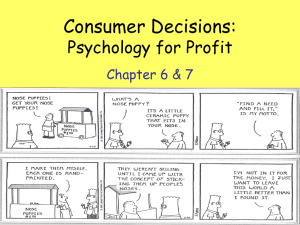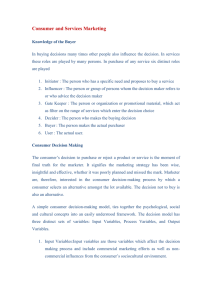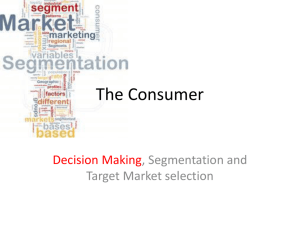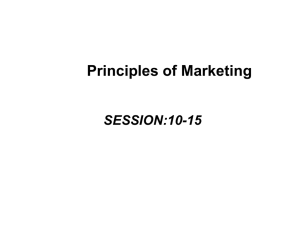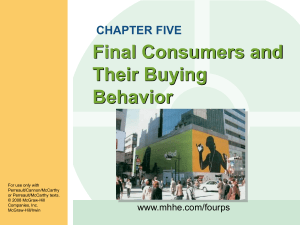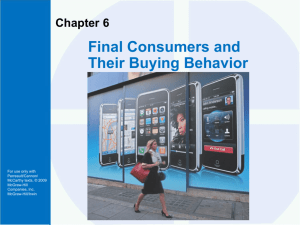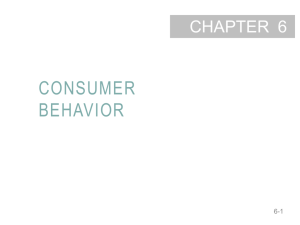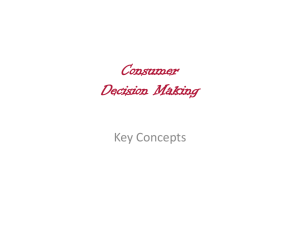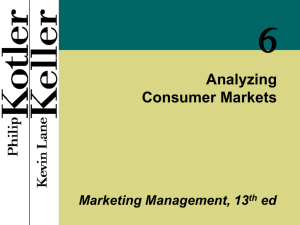KotlerMM_ch06 - UMM Directory
advertisement
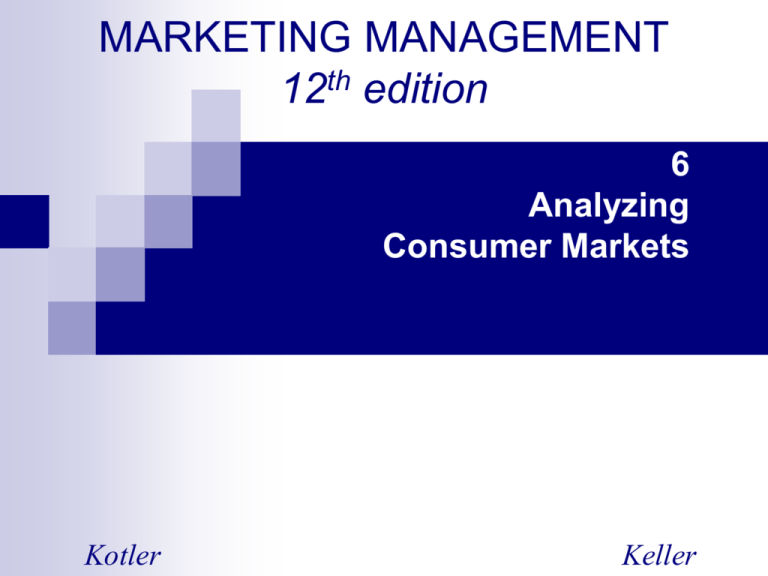
MARKETING MANAGEMENT 12th edition 6 Analyzing Consumer Markets Kotler Keller Chapter Questions How do consumer characteristics influence buying behavior? What major psychological processes influence consumer responses to the marketing program? How do consumers make purchasing decisions? How do marketers analyze consumer decision making? 6-2 What Influences Consumer Behavior? Cultural factors Social factors Personal factors 6-3 Culture The fundamental determinant of a person’s wants and behaviors acquired through socialization processes with family and other key institutions. 6-4 Subcultures Nationalities Religions Racial groups Geographic regions Special interests 6-5 Fast Facts About American Culture The average American chews 300 sticks of gum a year goes to the movies 9 times a year takes 4 trips per year attends a sporting event 7 times each year 6-6 Social Classes Upper uppers Lower uppers Upper middles Middle class Working class Upper lowers Lower lowers 6-7 Characteristics of Social Classes Within a class, people tend to behave alike. Social class conveys perceptions of inferior or superior position. Class may be indicated by a cluster of variables (occupation, income, wealth). Class designation is mobile over time. 6-8 Social Factors Reference groups Family Social roles Statuses 6-9 Reference Groups Membership Primary Secondary Aspirational Dissociative 6-10 Family Family of Orientation Religion Politics Economics Family of Procreation Everyday buying behavior 6-11 Personal Factors Age Life cycle stage Occupation Wealth Personality Values Lifestyle Self-concept 6-12 Brand Personality Sincerity Excitement Competence Sophistication Ruggedness 6-13 Key Psychological Processes Motivation Perception Learning Memory 6-14 Motivation Freud’s theory Maslow’s hierarchy of needs Herzberg’s two-factor theory 6-15 Perception Selective attention Selective retention Selective distortion Subliminal perception 6-16 Figure 6.4 Consumer Buying Process Problem recognition Information search Evaluation Purchase decision Postpurchase behavior 6-17 Sources of Information Personal Commercial Public Experiential 6-18 Non-compensatory Models of Choice Conjunctive Lexicographic Elimination-by-aspects 6-19 Perceived Risk Functional Physical Financial Social Psychological Time 6-20 Other Theories of Consumer Decision Making Involvement Elaboration Likelihood Model Low-involvement marketing strategies Variety-seeking buying behavior Decision Heuristics Availability Representativeness Anchoring and adjustment 6-21 Mental Accounting Consumers tend to… Segregate gains Integrate losses Integrate smaller losses with larger gains Segregate small gains from large losses 6-22
